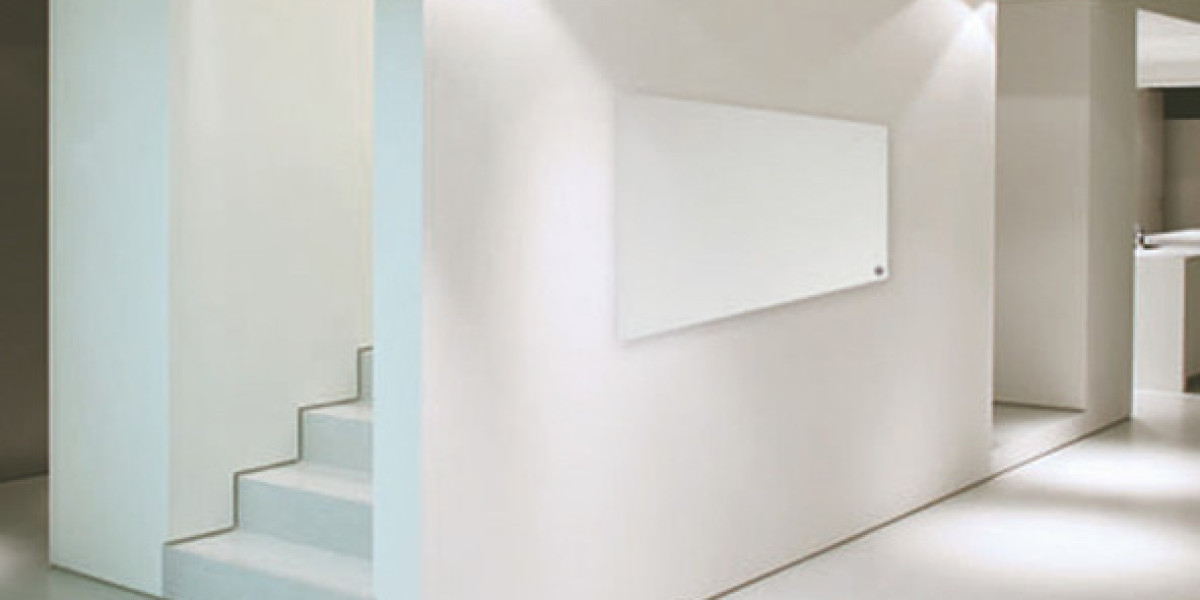In a world where energy efficiency and sustainability are more important than ever, homeowners are constantly on the lookout for innovative solutions that not only enhance comfort but also reduce their carbon footprint. Enter Heat Recovery Ventilation unit—a game-changer in modern home design that promises to transform how we breathe indoors while optimizing energy consumption. Imagine a system that captures the warmth from stale indoor air and uses it to preheat fresh outdoor air, all while maintaining optimal humidity levels. Intrigued? In this blog post, we’ll dive deep into the incredible benefits of HRV units, exploring how they can help you unlock unparalleled efficiency in your home—keeping you cozy during winter chills and cool when summer heats up.
Introduction to Heat Recovery Ventilation (HRV) Units
Imagine a home that breathes as easily as you do. A space where fresh air circulates without wasting energy, keeping your living environment comfortable and healthy. Enter heat recovery ventilation (HRV) units—the unsung heroes of modern homes. These innovative systems are revolutionizing how we think about indoor air quality and energy efficiency.
As our world becomes increasingly aware of the importance of sustainable living, HRV units emerge as vital players in this movement. They provide a seamless way to improve airflow while conserving precious resources. Curious about how these systems work? Let’s explore the inner workings and impressive benefits of HRV technology—your home's new best friend awaits!
How HRV Units Work and Their Benefits
Heat Recovery Ventilation (HRV) units are designed to optimize your home’s air quality and energy efficiency. They operate by exchanging stale indoor air with fresh outdoor air while recovering heat from the outgoing stream.
When warm, humid air is expelled, it passes through a heat exchanger within the unit. This process allows the incoming cold air to absorb some of that warmth before entering your living space. The result? A comfortable environment year-round without compromising on ventilation.
The benefits go beyond comfort. By maintaining balanced humidity levels, HRVs can prevent mold growth and reduce allergens in your home. This leads to healthier indoor spaces for you and your family.
Additionally, because these systems recover energy that would otherwise be wasted, they lower heating costs during winter months and cooling expenses in summer, making them an eco-friendly choice too. Investing in an HRV unit not only enhances comfort but also supports sustainability efforts.
Energy Efficiency and Cost Savings with Heat Recovery Unit
Heat recovery unit is a game changer for energy efficiency. They capture heat from stale indoor air and transfer it to incoming fresh air. This process dramatically reduces the need for additional heating or cooling. Homeowners can see significant cost savings on energy bills with an HRV system in place. By maintaining a consistent temperature, these units lessen the workload on HVAC systems. A smaller carbon footprint often accompanies lower expenses.
Moreover, many utility companies offer incentives for installing energy-efficient systems like HRVs. This makes them not just good for your home but also smart financially. Investing in an HRV unit pays off over time while enhancing comfort levels indoors. Every breath of fresh air comes at a fraction of traditional costs, making it a win-win scenario for budget-conscious homeowners looking to save money without sacrificing quality living conditions.
In addition to the energy and cost savings, HRV units also improve indoor air quality. By continuously cycling fresh air into the home and removing stale air, these units help to reduce the buildup of pollutants, allergens, and other contaminants. This can have a significant impact on the health and well-being of occupants, particularly those with respiratory issues or allergies. Improved air quality can also lead to better sleep, increased productivity, and reduced sick days.
Improved Indoor Air Quality with HRV Units
Indoor air quality often goes unnoticed, but it plays a crucial role in our well-being. HRV units are designed to tackle this issue head-on. They continuously exchange stale indoor air with fresh outdoor air while recovering energy.
As they operate, these systems filter out pollutants and allergens. This means fewer dust particles, pet dander, and other irritants circulating through your living space. The result? A healthier breathing environment for everyone. Moreover, maintaining optimal humidity levels is key to comfort and health. HRV units help control moisture buildup that can lead to mold growth or structural damage over time.
Families with asthma or allergies particularly benefit from the clean airflow provided by HRVs. These systems ensure that every breath you take at home feels refreshing rather than stifling. Enjoy peace of mind knowing the air you breathe is cleaner and safer for your loved ones.
Choosing the Right Heat Recovery Ventilation System for Your Home
Choosing the right heat recovery ventilation system for your home can feel overwhelming. With various models and specifications, it’s essential to focus on a few key factors. Start by considering the size of your home. The capacity of an HRV system should match your space for optimal efficiency. A unit that is too small may struggle to ventilate effectively, while one that’s too large could lead to unnecessary energy consumption.
Next, think about airflow rates. Look for units with adjustable settings so you can fine-tune ventilation based on seasonal changes or occupancy levels. Noise level also matters; some units operate quietly in the background, ensuring comfort doesn’t come at the cost of serenity. Lastly, check for energy ratings and warranties. These details give insight into long-term performance and reliability—important aspects when investing in such technology.
Installation and Maintenance of heat recovery and ventilation system
Installing a heat recovery and ventilation system is a straightforward process, but it’s crucial to approach it with care. Start by selecting the right location in your home, ideally close to the existing ductwork. This minimizes installation complexity and optimizes airflow.
Professional installation is recommended for best results. Experts can ensure that ducts are properly sealed and connected to maximize efficiency. They’ll also set up the control system correctly so you can easily manage ventilation settings. Maintenance is equally important for long-term performance. Regularly checking filters should be part of your routine—dirty filters restrict airflow and reduce efficiency.
Additionally, inspect ductwork yearly for leaks or blockages. Cleaning components like fans and heat exchangers helps maintain air quality as well as energy savings over time. Taking these steps keeps your HRV unit running smoothly throughout its lifespan.
Success Stories: Real-life Examples of HRV Unit Usage
Homeowners across the globe are reaping the rewards of heat recovery ventilation systems. One family in Toronto noticed a drastic improvement in their energy bills after installing an HRV unit. They reported savings of up to 30% during the winter months.
In another case, a couple renovating their beachfront property opted for an HRV system for better air quality. Not only did they enjoy fresher indoor air, but they also minimized humidity-related issues that come with coastal living.
Businesses aren't left out either. A small bakery implemented heat recovery ventilation and found that it enhanced both comfort and operational efficiency. Their employees felt less fatigued, leading to increased productivity on busy days. These stories illustrate how versatile and beneficial HRV units can be in various settings, making them a worthy investment for many households and businesses alike.
Beyond Homes: Other Applications of Heat Recovery Ventilation Technology
Heat Recovery Ventilation (HRV) technology isn't limited to residential settings. Its versatility makes it ideal for various applications across different industries.
In commercial buildings, HRV systems help maintain optimal air quality while reducing energy consumption. They are particularly beneficial in offices and retail spaces where large numbers of people gather daily. Healthcare facilities also leverage this technology to ensure clean air circulation, crucial for patient health. Hospitals can utilize HRVs to minimize airborne contaminants while conserving energy costs.
Educational institutions benefit from improved indoor environments that enhance focus and learning capabilities among students. Classrooms equipped with HRV units provide fresh air without losing heat during colder months.
Even industrial processes see advantages from HRV solutions by managing exhaust gases effectively while reclaiming thermal energy, leading to better efficiency overall. Each application highlights the flexibility and effectiveness of heat recovery ventilation beyond traditional home use.
Conclusion
Embracing the efficiency provided by Heat Recovery Ventilation units opens up a world of benefits for modern homeowners. These systems not only enhance energy performance but also significantly improve indoor air quality. By recovering heat from outgoing air, HRVs help maintain comfortable temperatures without straining your heating and cooling systems. As more people recognize the advantages of sustainable living, integrating an HRV unit becomes a smart choice. It’s about crafting healthier environments while optimizing overall energy use. With various models available, selecting the right one tailored to your home is both achievable and worthwhile.
FAQs
What is a heat recovery ventilation unit?
A heat recovery ventilation unit is a system that helps to improve indoor air quality and energy efficiency in modern homes. It works by replacing stale, polluted air with fresh outdoor air while also recovering the heat from the outgoing air to preheat the incoming air.
How does an HRV unit work?
The HRV unit has two separate channels - one for exhaust air and one for supply air. The stale, humid and polluted household air is extracted via ductwork from areas such as bathrooms, kitchens, and laundry rooms. This warm and moist air passes through a heat exchanger where it transfers its heat energy to the incoming cool and fresh outdoor air. The cooled down exhaust air is then expelled outside while the preheated clean air is distributed throughout the home.
What are the benefits of using an HRV unit?
a) Improved Indoor Air Quality: By continuously supplying fresh, filtered outdoor air into your home, an HRV unit helps to reduce pollutants, allergens, and humidity levels in your indoor environment.
b) Energy Efficiency: Since an HRV recovers most of the heat from outgoing exhaust air and uses it to preheat incoming cold outdoor air, it reduces your heating bills significantly.
c) Cost Savings: With improved energy efficiency comes reduced utility bills - making an HRV unit a cost-effective investment in the long run.
d) Better Health: By removing pollutants and excess moisture from your indoor environment, an HRV can help prevent respiratory issues such as allergies or asthma.
e) Comfortable Living Environment: An HRV ensures proper ventilation throughout your home which results in fewer hot/cold spots and provides a consistent temperature in every room.
f) Noise Reduction: An added benefit of having an HRV installed is that it filters out any external noise pollution before bringing fresh-air inside - making for a quieter living environment.
Will an HRV unit work in my home?
HRV units are suitable for almost all types of modern homes, including single-family homes, townhouses, apartments, and condos. However, it is recommended to consult a professional to assess the specific needs and requirements of your home before installing an HRV unit.
Related Business Listings |










